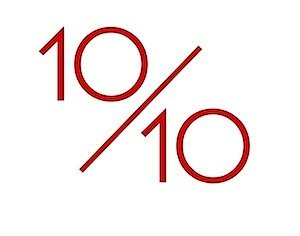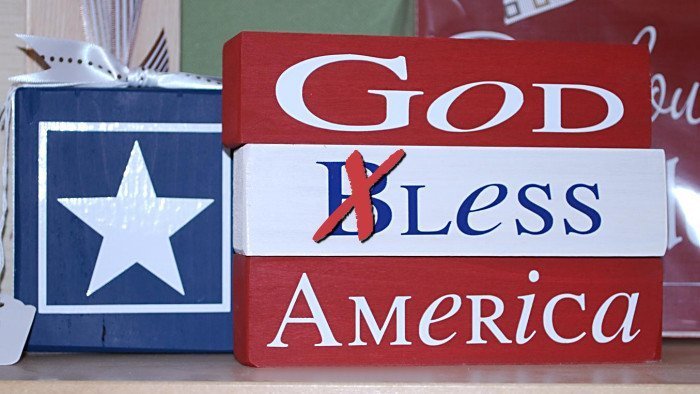For the first time “No Religion” has topped a survey of Americans’ religious identity, which could mean big changes on how future Americans approach law, morality and life.
Ryan Burge, a political scientist at Eastern Illinois University and a Baptist pastor, found that 23.1% of Americans now claim no religion.
Catholics came in at 23.0%, and evangelicals were at 22.5%.
The three groups remain within the margin of error of each other though, making it a statistical tie.
The GSS, a biennial project run by NORC (National Opinion Research Center) at the University of Chicago and one of the longest-running measures of religion in America, shows how the landscape continues to change.
{READ MORE ABOUT THE RELIGIOUS STUDY}
Ryan Burge has joined us on JimHeath.TV to discuss the annual survey in our 10 for 10 questions.
Jim Heath: Ryan, the trend of declining organized religion has been happening for awhile. Is there anything in your survey that surprised you?
Ryan Burge: The one thing that people seem to miss is that despite all the increase in the nones, evangelicals are pretty much the same size today as they were in the mid 1980’s. Intense religion is not on the decline, it’s those that are marginally attached that have left.
Jim: Intense religions hold their own while the mainstream religions decline, but when you add evangelicals and Catholics together they still dominate the American population, right?
Ryan: Yes, that’s an important part of this story that is being lost a little bit. If you add up all the Christian denominations, together they make up the vast majority of the country. About 7 in 10 Americans still claim a Christian background. America, demographically, is still overwhelmingly Christian.
Jim: Still, I noticed the spin on some Christian websites was that “evangelicals in the United States are holding steady,” yet by looking at your graph, a comparison of 1990 and today shows a huge drop in the evangelical population over the past two decades. Do I have that right?
Ryan: It’s all in the eye of the beholder there, I think. The data says that evangelicals were around 20% of the population in the 1970s, then they spiked up to around 30% during the early 1990’s. Now, they are back to 23% or so. It just depends on how you view the findings. If you think that the 1990’s was really just an aberration, then they haven’t seen a decline. If I show that trend line to ten people, they are fairly evenly split in their interpretation.
Jim: Let’s look at that another way: If we were to chart out the “under 40” versus “over 40” on religion, would there be a dramatic difference?
Ryan: Absolutely. Young people have an entirely different religious makeup than their parents. For instance, 32.8% of people 40 and under identify as a “none” compared to 17.1% of those who are over the age of 40. Older Americans are three times more likely to attend a mainline Protestant church. Clearly, young Americans are skeptical of religion.
Jim: As the influence of organized religion wanes, does a more scientific and fact-based reality threaten our Republic in some way? Congress starts each day with a prayer, we see In God We Trust in many public buildings and on our money, and a lot of our laws are based on religious “morals” or “morality” as an example.
Ryan: I think that’s largely a philosophical question that is not in my wheelhouse to answer. Secularization theory argues that as nations become more prosperous and have increased levels of education, then they will see a decline in religiosity. Europe is the prime example of that. In many Scandinavian countries, a small fraction of people attend church. Their governments seem to be fairly stable.
Jim: To my knowledge there’s not a single atheist in Congress. Sen. Kyrsten Sinema has said she is “religiously unaffiliated” but won’t answer the atheist question. There was a Pew survey a few years ago that showed Americans would rather vote for about anyone else than an atheist. With millennials starting to vote more, how long would you guess until there’s some representation in government?
Ryan: There are no avowed atheists in Congress. It’s a tough sell. A 2014 poll found that half of American parents would be disappointed if their child married an atheist. There’s a really large stigma that surrounds it. Robert Bellah argued long ago that America had a civic religion, which is a general belief in a higher power. Declaring oneself an atheist would likely turn off many more voters than it would attract. I don’t see that changing anytime soon. There may be an atheist or two elected in very liberal and urban areas, but that will clearly be the exception.
Jim: Christians already seem on edge that their firm grasp on our culture is slipping, many complaining they are now “victims” of religious discrimination. Is there any way to know how a
shrinking majority may react when diversity of opinion happens?
Ryan: There’s a fascinating shift that is occurring among Christian conservative circles right now when it comes to talking about discrimination. It used to be that the Religious Right would make arguments against abortion or gay marriage in the legal system based on a sense of shared morality. Now, many of these organizations have shifted their approach to religious freedom. Instead of arguing about gay marriage, they want to emphasize the Masterpiece Cake Shop case, where a baker refused to bake a cake for a same-sex wedding. There they can argue that the baker’s religious freedom is being infringed upon and make same-sex marriage an ancillary issue to the case. That’s proven to be a very effective strategy and public opinion strongly supports religious freedom arguments. I think that we will see this type of case being brought before the Supreme Court on an increasing basis.
Jim: With all the focus on Muslims in the Trump era, they don’t even show up on your graph. This is not a religious population in America that is growing very fast either?
Ryan: Muslims are an incredibly small portion of the population. According to the General Social Survey about one half of one percent of Americans are Muslims. In comparison, Mormons are about 1.5% of the population. We can’t really assess their beliefs and behaviors well because they are such a small portion of the American public. In addition, there is nothing in the data that indicates anything close to rapid growth.
Jim: Many who don’t read history would be surprised to learn many of our founders were not Christian – John Adams, Benjamin Franklin and Thomas Jefferson come to mind. In fact, Jefferson once ripped apart the bible and rewrote it. Washington and Lincoln are not known to have mentioned Christ at all in their public lives. So has it been just in the last 100 years or so that Christianity took off as such a dominant force in America?
Ryan: Christianity has always been a part of American life, but for most people, across most time periods of American history were “culture Christians.” What that means is that they attended church for the social benefits and feeling of community. Many of them had only a passing interest in any real theology. It’s fairly well known that George Washington attended church as a political ploy. It seems that the rise of the televangelist era in the 1970s helped to force fundamentalist Christianity into the mainstream consciousness of Americans. Conservative preachers have been saying some fairly fringe things for centuries, but no one outside their congregations heard them. When preachers got on TV, a whole world was opened up to them and many of the best speakers became national known figures in evangelicalism.
Jim: Our website has been quite critical of Scientology, which does receive tax-exempt status as a church. When you combine cult like religions like these, is there any sign that they are growing?
{READ: Tom Cruise, Leader Of Dangerous Cult}
Ryan: In all the data I have ever looked at I have never seen a question that includes Scientology as a response option. I think that the advent of the Internet really spelled the end for Scientology. Many young people grew up watching documentaries and hearing testimonials about people who left the church. It has a major image problem and I can’t see a way for them to overcome that.
Jim: Let’s do a “bonus 11” question! What’s your prediction on when the “nones” will be the firm majority in America?
Ryan: Best guess is by 2025, or maybe a bit earlier. The current trend is gaining about half a point a year, but it takes a while to get outside the margin of error. I feel fairly confident that in the next five years the nones will be about a quarter of the population.
Jim: Ryan, thanks for a great discussion.
Ryan: Thank you.








